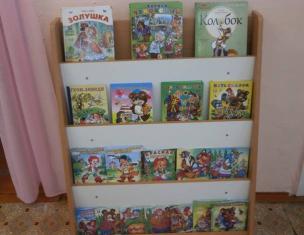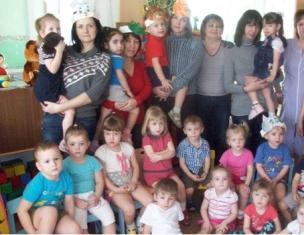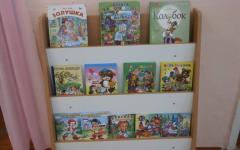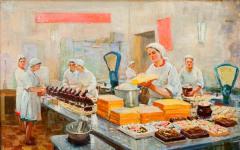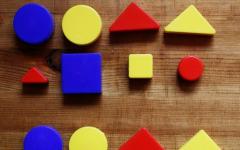Didactic games as a means of adopting senior preschoolers to decorative and applied arts.
Pavlova Vera Valerievna, Tutor SpecialGroup MOU "Bendeysk Children's Garden number 9" City of Bender
Annotation:this selection of didactic games will be useful to educators and teachers of primary classes.
Purpose:data didactic games can be used when conducting a node, in self-child activity
Age audience: Senior pre-school age (5-7 years).
Purpose:Development of children's interest in folk crafts and painting; The ability to distinguish them and learn.
Tasks:
Develop the interest of children to folk crafts and painting through the use of didactic games.
To be able to distinguish between color gammas characteristic of various crafts (Gzhel, Gorodets, Khokhloma, Chimka).
Forming attention, memory, logical thinking from preschoolers.
Cause positive emotions during gaming activities.
Educating love for decorative and applied creativity.
***
Preschoolers get acquainted with decorative and applied art from early childhood: folk toys include elements of painting (berries, leaves, flowers), which is understandable and accessible to children. This type of art comes to children to customs and traditions of their people, enriches ideas about the environment world.
Didactic games help To form cognitive interest and informational activity, learn the elements and characteristic features of various paintings and join the customs and traditions of the peoples living nearby.
Didactic game "Remember Folk Fishes"
Purpose of the game: The introduction of preschoolers to the types of folk crafts, formation of attention and memory.
The course of the game. It is necessary 12 pairs of the same cards, which, before the start of the game, the presenter mixes and lays out the "shirt" up. Children in turn open 2 cards. If both cards coincide, the child takes them. If one of the cards does not coincide, then the child puts both cards to the previous place "shirt" up and the right of the course goes to the next participant. Wins the one who as a result of the game will be the most of all cards.
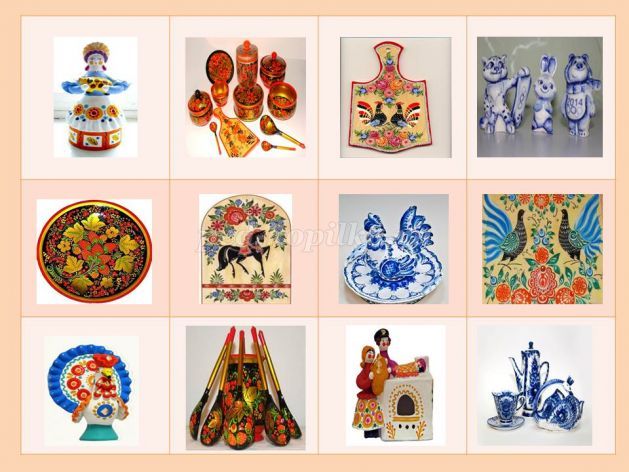
Didactic game "Count subjects"
Purpose: recognition of folk painting on characteristic features; coordination of nouns and adjectives with numerical; Formation of perception, attention and long-term memory.
The course of the game. The player receives a card with depicted objects, considers them and calls the type of painting. For example, I have three khokhloma spoons, etc. ; For the correct answer, the child gets a chip. The child wins, who at the end of the game most of all chips.
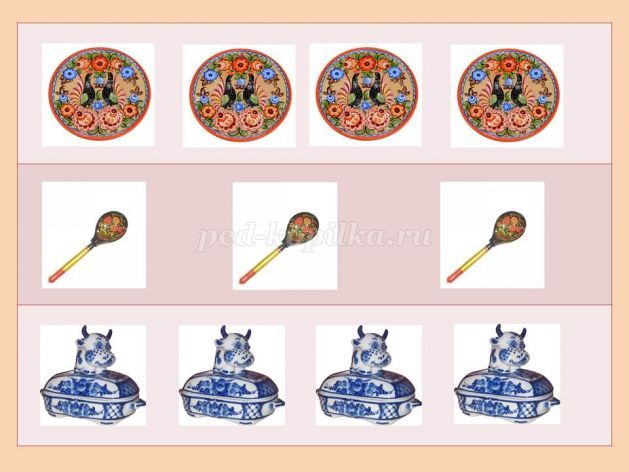
Didactic game "Fourth Excess"
Purpose: Fastening the ability to find objects of various folk crafts, the development of perception, attention, memory, be able to prove their point of view.
Material. Cards with the image of four items performed by various folk paintings.
The course of the game. Players carefully consider their items depicted on cards, find an excess object and explain why he is superfluous, which is characteristic of this type of painting.
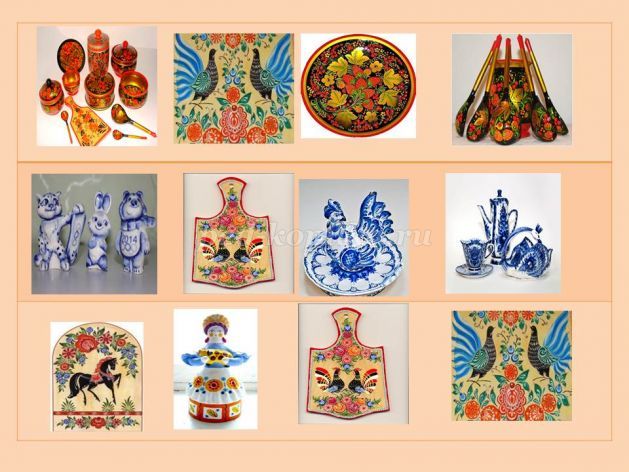
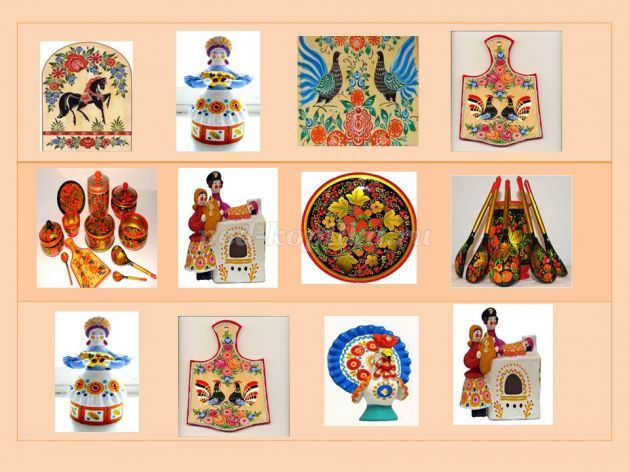
Didactic game "Lotto - Folk Fries"
Purpose:recognition of folk painting on characteristic features (Gzhel, Gorodetskaya, Khokhlomskaya); Formation of attention, speed of reaction.
Material. Set of cards (large and small) depicting various items with different paintings (Gzhel, Khokhloma, Gorodets) in random order.
The course of the game. They are distributed on the same map, which depicts various items with paintings. The presenter uses small cards with items with different paintings. The player wins the first to fill his card.
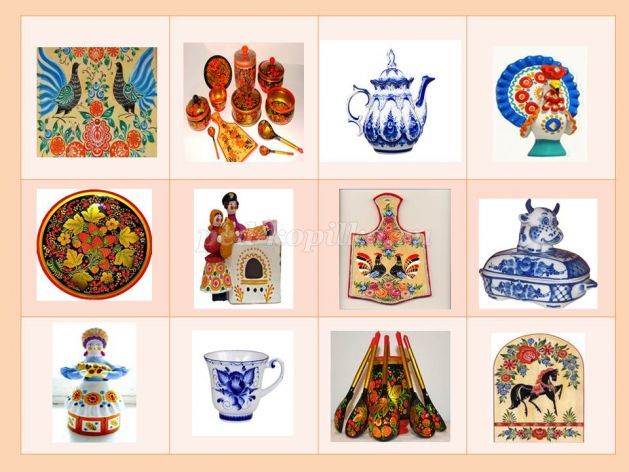
Didactic game "Where is the subject with Gzhel (Dymkovskaya, Khokhloma) painting?"
Purpose: Learning of national painting on characteristic features (Gzhel, Gorodetskaya, Dymkovskaya, Khokhlomskaya), formation of attention and logical thinking.
The course of the game. Name where the subject is located with the named painted (Chimka, Gorodets, Khokhloma, Gzhel).
Option: Close the subject with this painting Fishkoy. Wins the one who has all the pictures are closed with chips.
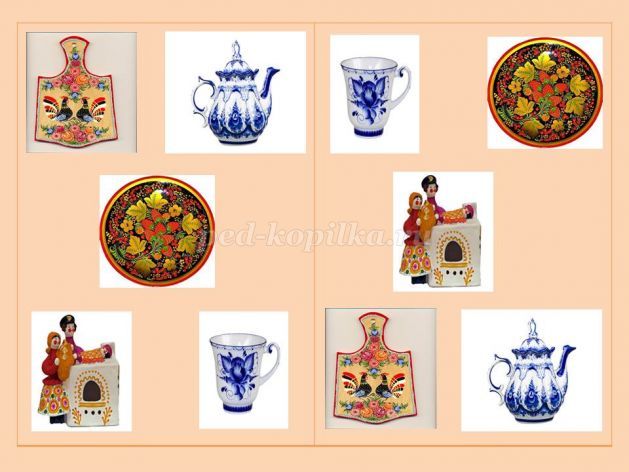
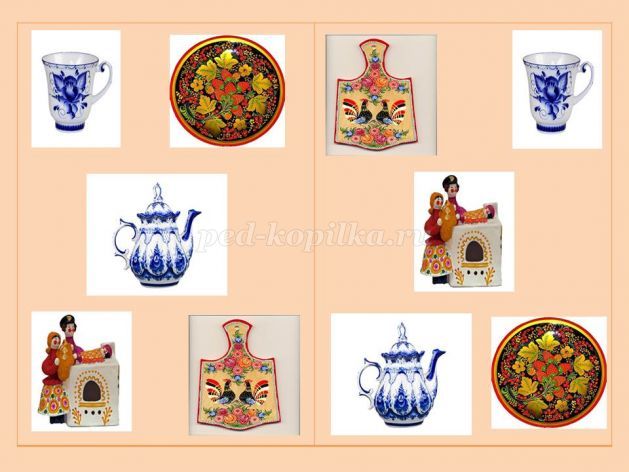
Didactic game "Name, what has changed"
Purpose: Learning of people's painting on characteristic features (Gzhel, Gorodetskaya, Dymkovskaya, Khokhlomskaya) and the development of observation, long-term memory and speed of reaction, the ability to explain changes in the figure.
Material. Items of different crafts.
Gaming rules. A child who first noticed what has changed in the picture, raises his hand and explains his answer. For the correct answer, he gets a chip.
The course of the game. In Figure 5 of various items with paintings. The presenter shows the second picture where there is no object. The task of playing can guess what kind of subject is not in the picture and explain the answer.
Option. Items can be changed in places.
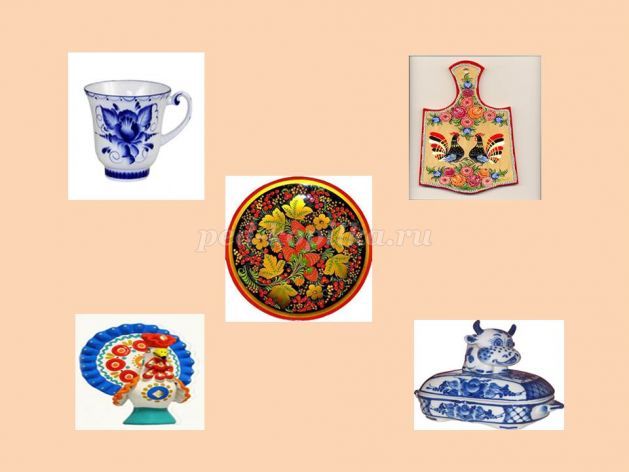
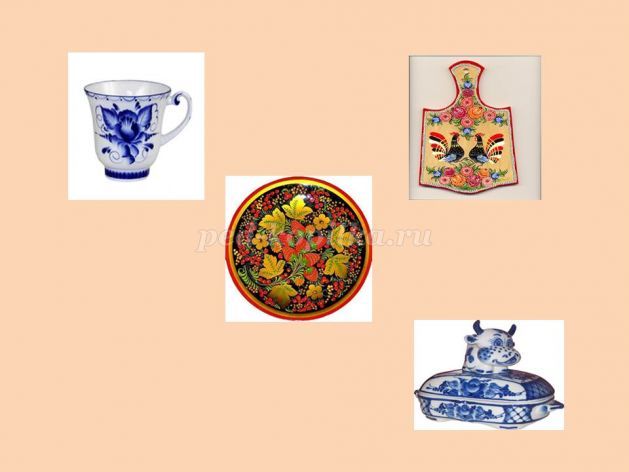
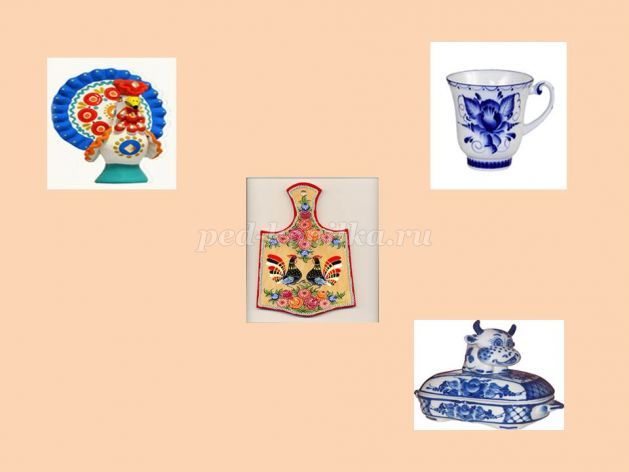
Didactic game "Find embroidery"
Purpose of the game: Fastening knowledge about a variety of embroidery (Russian, Ukrainian, Moldavskaya), formation of attention and logical thinking.
The course of the game.You must fill out all the playing field with different pictures so that in each column, in each row and in each square 3x3 cells of the pictures have not been repeated.
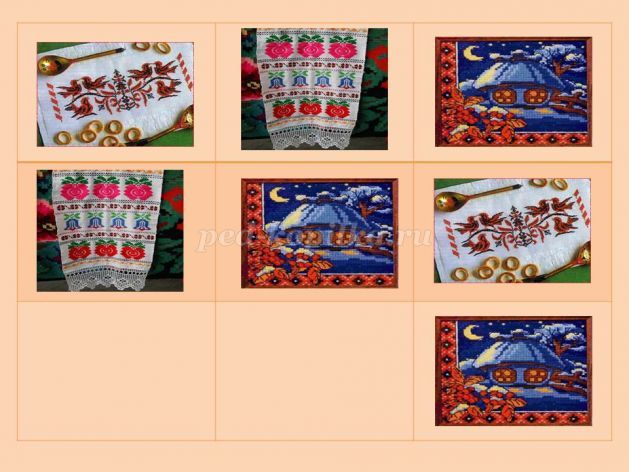
I recommend teachers of preschool education organizations to use the proposed games in classes, leisure activities, quiz, in individual work.


